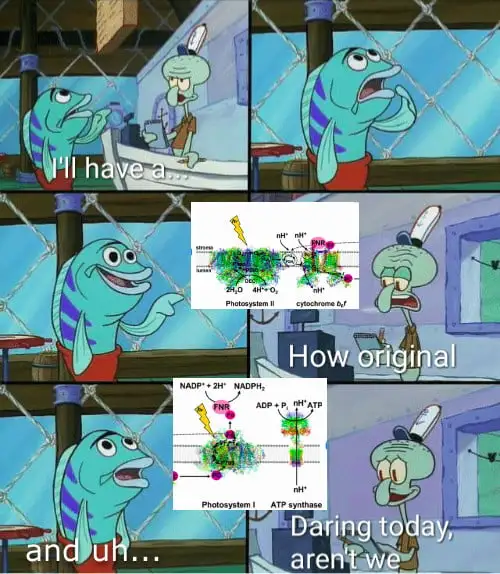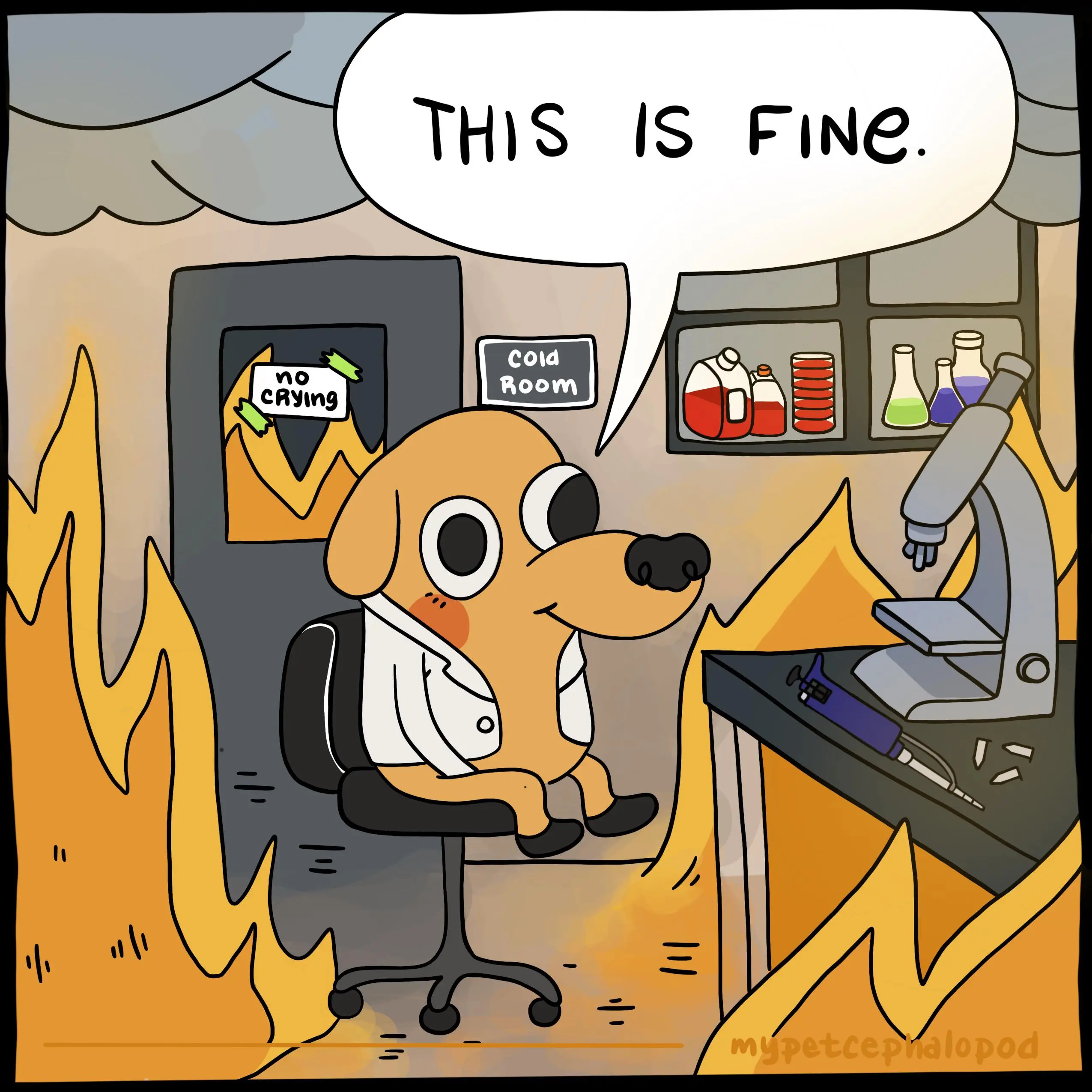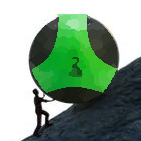The air is full of nitrogen with trace amounts of carbon. The soil is rich in carbon but nitrogen poor. Plants draw carbon from the air and nitrogen from the soil.
Is there a reason for this? Like, just a fluke of evolution, or is it just not as bioavailable from the opposite source?
Nitrogen as a gas (N2) has a triple bond to another nitrogen. Those are the hardest bonds to break. CO2 has strong double bonds to oxygen, but those are easier to break. Bacteria and fungi are able to split nitrogen and supply it to plant roots in exchange for carbon (sugars) in symbiotic relationships.
Side note, but we’re starting to see the exchange rates of nitrogen and carbon shift, because plants are now absorbing/exchanging so much carbon from the air
Too cool! Thank you for educating me! I’m american, I think that means I owe you 200 thousand in student loans, right?
Late to the party, but I want to answer your question more directly than others have, because while they might be correct in part, they are missing, perhaps some of the most important and direct aspects of an answer, which is, yes there is a reason for this, and the answer is evolution, but almost assuredly not in the way you might be thinking.
Specifically, its that the composition of the atmosphere itself is a result of evolution. And the nature of how nitrogen fixation needed to evolve, the specific conditions required, and the shift to oxygen as the terminal electron receptor resulted in the singularly most massive shifts in all of biological history of all time. So yes, “evolution”, but actually, the order of operations goes in the other direction, and the very nature of nitrogen fixation is an evolutionary artifact of this.
Life on early earth was almost entirely anaerobic. They did not use oxygen as the “terminal electron receptor”, which in a molecular sense is far more “down hill” from other molecules, and thus, you can get far more energy if you can land your electrons on oxygen at the finish line. However, oxygen is a greedy fucking bastard who will basically tear apart anyone or anything to get back to that ground state; hence the need for so many antioxidants in plants, animals, fungi: because our shit gets fucked up by oxygen. Early earth simply didn’t have oxygen in any significant amounts. Why? See the previous point. Oxygen is a greedy fucking bastard that doesn’t want to stick around. Its desperate to get back to a more neutral ground state.
In the absence of oxygen, there are other options one can use as a terminal electron receptor, and specifically, N2 can be used to be that ground ground state. However, the enzyme which catalyzes those reactions, nitrogenase, gets its shit COMPLETELY fucked by oxygen. But for literally billions of years, life worked without oxygen, and nitrogenase was central to this process.
Enter the period of about 2.5 billion years ago, and introduce the “Great Oxygen Holocaust”. Basically, what happened, is some cunt of a cyanobacteria figured out a way to perform oxygen photosynthesis, effectively splitting water, which both uses and creates oxygen (which is a bi-product of the reaction) to create significantly more energy. Its no coincidence that the spectral absorbance lines of chlorophyll and the spectral emission lines of hydrogen line up like they do. But what about nitrogen? All my homies LOVE nitrogen still. What happened?
What happened was the total and complete destruction of the worlds ecosystems as they would have been. This was the great oxygen holocaust and it literally changed earth systems beyond recognition. Evolution had gone so far as to literally make the types of chemistry and geology that were happening before the evolution of oxygen photosynthesis impossible.
And with that, nitrogen fixation is totally fucked in the context of an oxygen atmosphere. Like it just literally can’t happen, but just because some organisms found a better way to do photosynthesis, doesn’t mean that they stopped needing nitrogen. They still need it, but they were now pretty fucked in their ability to create it. And we see that in the types and approaches for nitrogen fixation that are still present today. If you want to do if you want to do nitrogen fixation today, is you have to create special cells, with extremely thick walls to concentrate and exclusively fix nitrogen, like Nostoc. Or you have to separate the process temporally (Anabaena), or if you are real tricky you hire a contractor like how legumes form nodules of Rhizobia in their roots, which are far away from where the oxygen gets generated (leaves), or tripartite cyanolichens where they create special structures for oxygen exclusion.
So yes, short answer, evolution. But its actually the other way around: Plants didn’t evolve to our atmosphere; plant evolution constructed and maintains the atmosphere we live in.
Calling it a fluke is kind of missing the point. Plants that where/are better at making use of the atmosphere as it is, will be the ones that thrive. If the atmosphere was different, different plants would exist.
I responded in more detail above, but you’ve actually got it backwards.
Plants that where/are better at making use of the atmosphere as it is, will be the ones that thrive. If the atmosphere was different, different plants would exist.
Our atmosphere is the result of plant evolution; not plant evolution a response. There were (and to an extent are) plants that evolved in a different atmosphere. And they almost all got wiped the fuck out once oxygen photosynthesis evolved. Many plants and bacteria still keep the hardware and software around for doing this work, but its way fucking trickier than it used to be, because oxygen.
Plants managed to use their ability to pull carbon out of the air to kill almost everything else alive at the time
They pull out carbon from carbon dioxide, and dump the oxygen*
Which turned out ok. It’s called the great oxygenation crisis
*That which they don’t use, I don’t know if they used it back then
Gotta catch em all.

I don’t get it, but I do have deuteranopia.
You have probably heard that plants are green. They are green because they reflect green light
They reflect green light because they can’t absorb all of it
Nope! Plants do absorb green light, but since the sun is green, it would be too intense to do it all at once, so they reflect it back as to not overheat, and to let other parts of the plants to absorb it.
Now, you may be asking me, “What do you mean the sun is green?” The sun isn’t yellow, it’s white, but blue gets stripped out by Rayleigh scattering. “But then how is it green?” White is green as an even temperature white light has a dominant wavelength in green, but a large bandwidth into blue and red. Same reason we use green materials like silver, aluminum, and soda lime glass.
I shall edit that to say they can’t absorb all of the green. Indeed some plants are very close to black
And the green end of the spectrum is the highest energy end. Our solar panels out perform plants in energy production partly because they can tolerate much, much more of the higher energy frequencies
I see what you did there. You red that right.
wow what’s it like living with two anopias?
It just doesn’t push electrons the way that sweet sweet red light does.
For those who don’t know, the green end of the spectrum has more power than the red end. It can push electrons, make chemistry happen, and damage cells.
Red light is so low energy you can use it as a safe light when working with black and white film
The colour of light that can give you a tan or turn cholesterol to vitamin D is ultra violet, further to the green end than green or even blue
I thought green light was the least effective? That’s why you see all those purple grow lights.
Green light isn’t absorbed by green plant leaves, it’s reflected. The pigments in leaves do absorb waves on either side of green, which is why those blue+red lights are used
He’s throwing the plate of green light away.
I completely misinterpreted this whole situation. Thought he was reaching out longingly.
The post title, GTFO, is an abbreviation/acronym/initialism (? idk the difference) for “get the fuck out”.







